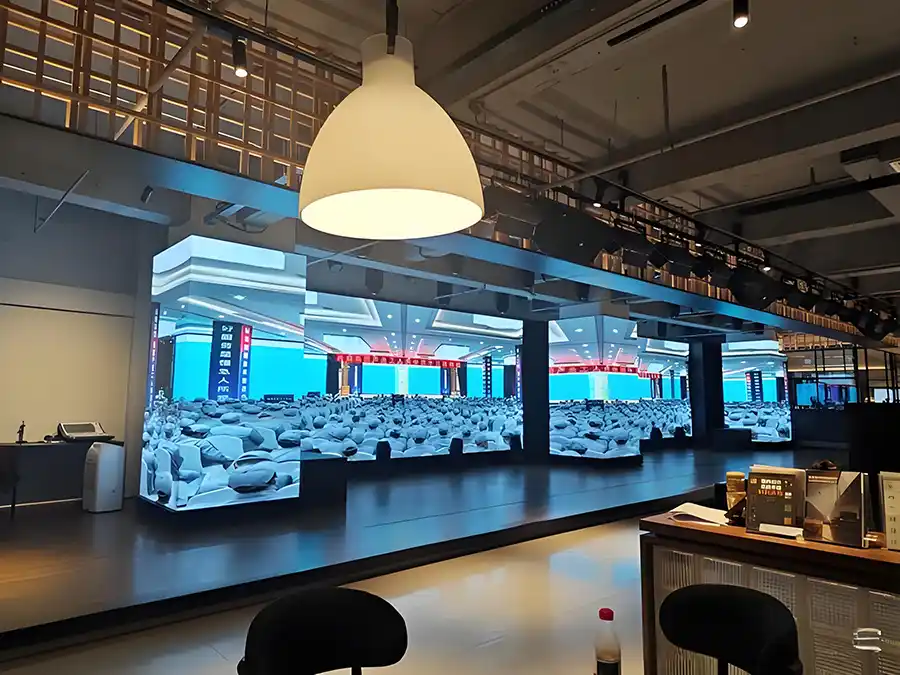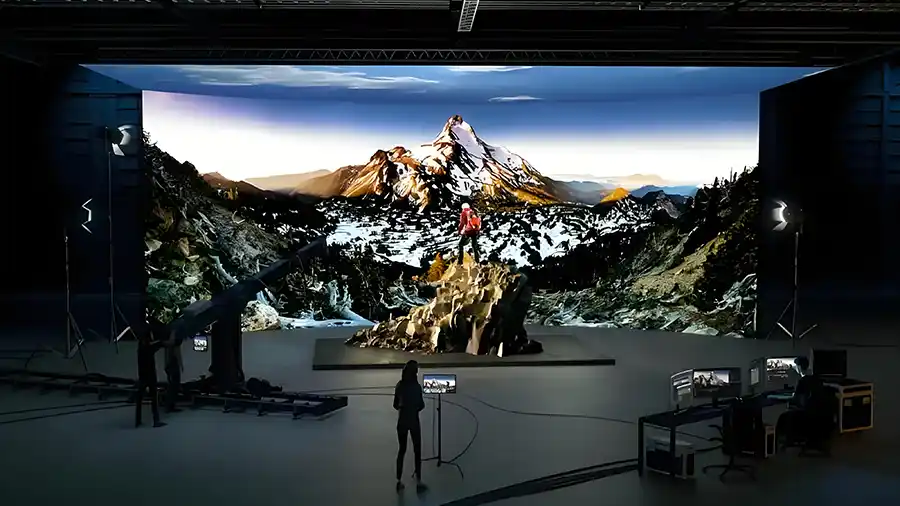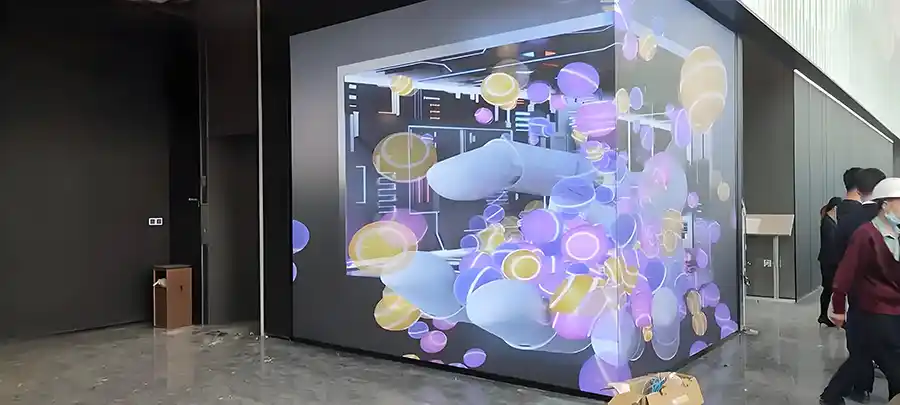In recent years, the film and content creation industries have witnessed a profound shift in how stories come to life. The LED virtual production wall has emerged as a pivotal technology, transforming traditional filmmaking by merging real-time digital environments with physical performance spaces. This fusion creates a dynamic and immersive experience for actors, directors, and audiences alike.
This article delves deep into the nuances of LED virtual production walls, explores their technical and creative innovations, offers practical comparisons, and answers some less-discussed questions to give you a well-rounded understanding.
While traditional production methods rely heavily on green screens and post-production compositing, LED virtual production walls project photorealistic environments directly onto large LED panels on set. This real-time visual feedback radically improves lighting realism and actor immersion.
But beyond that basic description lies a world of technical intricacies, creative freedom, and workflow innovations.

1. Dynamic Environmental Interaction
Unlike static backdrops, LED walls can simulate changing weather, time of day, and environmental effects that adapt on the fly. Imagine a desert scene transitioning into a thunderstorm seamlessly while shooting continues uninterrupted.
2. Camera Perspective Parallax
Advanced camera tracking allows the virtual environment on the LED wall to shift perspective precisely as the camera moves, creating true parallax and preventing the flat look common with green screen backgrounds.
3. Scalable and Modular Design
Modern LED walls are modular, meaning they can be assembled in different shapes and sizes—from simple flat panels to fully curved volumes that envelop actors in 270-degree or 360-degree immersive worlds.
4. Integration with Motion Capture and XR Technologies
LED virtual production walls are increasingly combined with motion capture (mocap) and extended reality (XR) tools, allowing virtual characters and physical actors to interact seamlessly within shared virtual sets.
特徴 | Traditional Green Screen | LED Virtual Production Wall |
Background Visualization | Post-production compositing only | Real-time live visualization |
Lighting | Artificial, often mismatched | Natural lighting from LED display |
俳優の没入感 | 低い、想像力に頼る | 高画質でリアルな視覚環境 |
カメラの視点の視差 | 限定的、事後FX調整が必要 | リアルタイムの追跡に基づく正確性 |
生産時間 | VFXとポストプロダクションのため長くなります | 短く、カメラ内で最終ショットを撮影 |
場所の柔軟性 | 無制限の仮想 | 無制限の仮想 |
設備費 | 初期費用を抑える | 初期投資の増加 |
創造的な柔軟性 | 適度 | 高く、ダイナミックで適応性に優れた |
映画やテレビ番組が LED バーチャル プロダクション ウォールの導入をリードしていますが、他のさまざまな業界でも新しい使用例が発見されています。
バーチャルファッションショー:デザイナーは、デジタルのランウェイ環境や幻想的な背景を投影し、ライブモデルと仮想要素を融合して革新的なプレゼンテーションを実現します。
建築ビジュアライゼーション:建築家とクライアントは、LED ウォールをインタラクティブな 3D ウィンドウとして使用することで、建設が始まる前にリアルな建物の内部と外部を歩き回ることができます。
治療および医療研修:没入型 LED 環境は、医療専門家のトレーニングや治療現場向けの複雑なシナリオをシミュレートします。
没入型博物館と展示:博物館では、LED ウォールを使用して歴史的な環境を再現し、訪問者をより深く引き込むインタラクティブな展示を行っています。
テーマパークとアトラクション:テーマパークでは、乗り物やライブショーに合わせて背景を変えられる柔軟な風景を作り出し、物理的なセットを再構築することなく背景を変えることができます。

仕様 | 理想的な範囲/機能 | 理由 |
ピクセルピッチ | 1.2mm~2.6mm | クローズアップ撮影に適した高解像度 |
リフレッシュレート | 3840Hz以上 | ちらつきのないカメラ撮影 |
ビット深度(カラー) | 14ビットから22ビット | 滑らかなグラデーションと色の忠実度 |
輝度 | 800~1500ニット | 周囲の照明のニーズをバランスよく満たす |
視野角 | 160度以上 | 角度による均一な画質 |
壁の構成 | モジュール式、曲面、または平面 | 創造的なニーズに応える柔軟性 |
レイテンシー | 10ミリ秒未満 | シームレスな同期 |
リアルタイムコラボレーション
監督、VFXスーパーバイザー、セットデザイナーは、クラウド接続システムを介してリモートで連携し、撮影中に仮想環境を調整できます。この統合により、移動コストが削減され、フィードバックループが加速されます。
AI支援による環境生成
新しい AI ツールは、スクリプトの入力や監督の好みに基づいて 3D 環境を生成または変更するのに役立ち、手作業の作業負荷を軽減し、プリプロダクションをスピードアップします。
ハイブリッドセットアップ
物理的なセットピースとLEDウォールを組み合わせることで、触覚的なリアリティと視覚的な柔軟性を両立させることができます。例えば、素朴な小屋の外観は実際のセットとして、周囲の森や空は仮想のセットとして表現することができます。
1. LED バーチャル プロダクション ウォールは、セットでの音の反射と音響をどのように処理しますか?
従来のサウンドステージとは異なり、LEDウォールは反射面を形成し、音響に影響を与えることがあります。制作現場では、LEDセットアップの周囲に音響パネルやカーテンなどの吸音材を追加して、エコーや残響を抑えることがよくあります。スピーカーの配置と指向性マイクの適切な使用は、撮影中にクリアな音声を収録するのに役立ちます。
2. LED バーチャルプロダクションウォールは 3D 立体撮影をサポートできますか?
はい、多くの高度なLEDウォールシステムは立体視(3D)撮影技術に対応しています。重要な課題は、2台のカメラの正確なキャリブレーションと同期、そしてLEDコンテンツがそれぞれの目の視点に合わせて正しくレンダリングされることです。この機能は、特にVRやARコンテンツ制作において、没入感のあるストーリーテリングを強化します。
3. 大型 LED ウォールの電力消費に関する考慮事項は何ですか?
大型LEDバーチャルプロダクションウォールは多大な電力を消費するため、安定した電源やバックアップシステムなど、専用の電気インフラが必要となることがよくあります。エネルギー効率の高いLEDパネルと高度な冷却技術は、運用コストと環境への影響を軽減します。

4. LED バーチャル プロダクション ウォールはどの程度ポータブルですか?
多くのLEDウォールはモジュール式で組み立て・分解が可能ですが、本格的なバーチャルプロダクションでは、その規模とインフラ要件から、専用のスタジオスペースが必要となる場合がほとんどです。しかし、小型またはモバイル型のLEDウォールは、ロケ撮影やイベントなどで人気が高まっており、携帯性とスケールのバランスが取れています。
5. LED ウォールを操作する際に必要な安全上の注意は何ですか?
LEDウォールは熱を発生するため、堅牢な電気システムが必要です。安全対策としては、適切な接地、消火システム、安全なリギング構造、定期的なメンテナンスなどが挙げられます。さらに、繊細な電子機器の取り扱いと緊急時の対応に関する乗務員の訓練も不可欠です。
6. 大型 LED ウォール全体で色調整はどのように維持されますか?
均一な色と明るさは非常に重要です。高度なキャリブレーションツールは、分光計とソフトウェアを用いて各パネルの出力を分析し、個々のLEDを一貫したカラープロファイルに合わせて調整します。シームレスな映像を実現するために、キャリブレーションは毎日、あるいは撮影のたびに実施されることが多いです。
7. LED バーチャル プロダクション ウォールはドローンやロボット カメラ システムと統合できますか?
はい、ロボットアーム、ドローン、自動化リグをLEDバーチャルプロダクション環境と同期させることができます。このセットアップにより、バーチャル背景と動的に相互作用する複雑なカメラワークが可能になり、ユニークなショットを生み出すクリエイティブな可能性が広がります。
8. エッジ ブレンディングとコンテンツ マッピングは LED ウォールでどのような役割を果たしますか?
エッジブレンディングは、隣接するLEDパネル間の遷移を滑らかにし、パネルの境界が見えないシームレスな映像を実現します。コンテンツマッピングにより、デジタル環境がLEDウォールの物理的な寸法と形状に一致するように調整されます。これは、特に曲線や不規則な形状の設置において重要です。
9. LED パネルの寿命はどのように保証されますか?
高品質のLEDパネルは、数万時間の動作を想定して設計されています。メンテナンスには、定期的な清掃、ファームウェアのアップデート、故障したモジュールの適切な交換が含まれます。適切な換気と温度管理も寿命を延ばします。
10. 従来のロケーション撮影に比べて、LED バーチャル プロダクション ウォールを使用すると環境面で利点がありますか?
はい、バーチャルプロダクションは移動、物理的なセット建設、大規模なクルーの必要性を減らし、二酸化炭素排出量と資源消費を削減します。多くのスタジオは、長期的な制作においてLEDウォールをより持続可能な選択肢と捉えています。

LEDバーチャルプロダクションウォールは、単なる技術のアップグレードにとどまりません。ストーリーテリングそのものを再考する機会を与えてくれるのです。デジタルの精度と物理的な現実を融合させることで、新たな創造の地平を切り開き、実用面でも効率性を高めます。
AI、クラウド コラボレーション、新興テクノロジーとの統合を通じてイノベーションが限界を押し広げ続けるにつれ、LED 仮想制作ウォールは、映画制作、ライブ イベント、業界全体の没入型体験の中心になるでしょう。
LED バーチャル プロダクション テクノロジーへの投資や提携は、もはや単なる贅沢ではなく、コンテンツ作成の未来に向けた戦略的な動きです。
LED バーチャル プロダクション ウォールがプロジェクトをどのように向上させるかを検討したい場合や、テクノロジーの選択とワークフローに関するガイダンスが必要な場合は、お気軽にお問い合わせください。カスタマイズされた洞察とソリューションをご提供します。
注目のおすすめ
当社の製品にご興味がございましたら、お気軽にお問い合わせください。
弊社の営業チームにお問い合わせいただければ、お客様のビジネス ニーズにぴったり合ったカスタマイズされたソリューションをご案内し、ご質問にお答えします。
電子メールアドレス:info@reissopto.com工場住所:中国、深圳市宝安区十堰石龍コミュニティ公業二路1号、慧科フラットパネルディスプレイ工業団地6号館
ワッツアップ:+86177 4857 4559